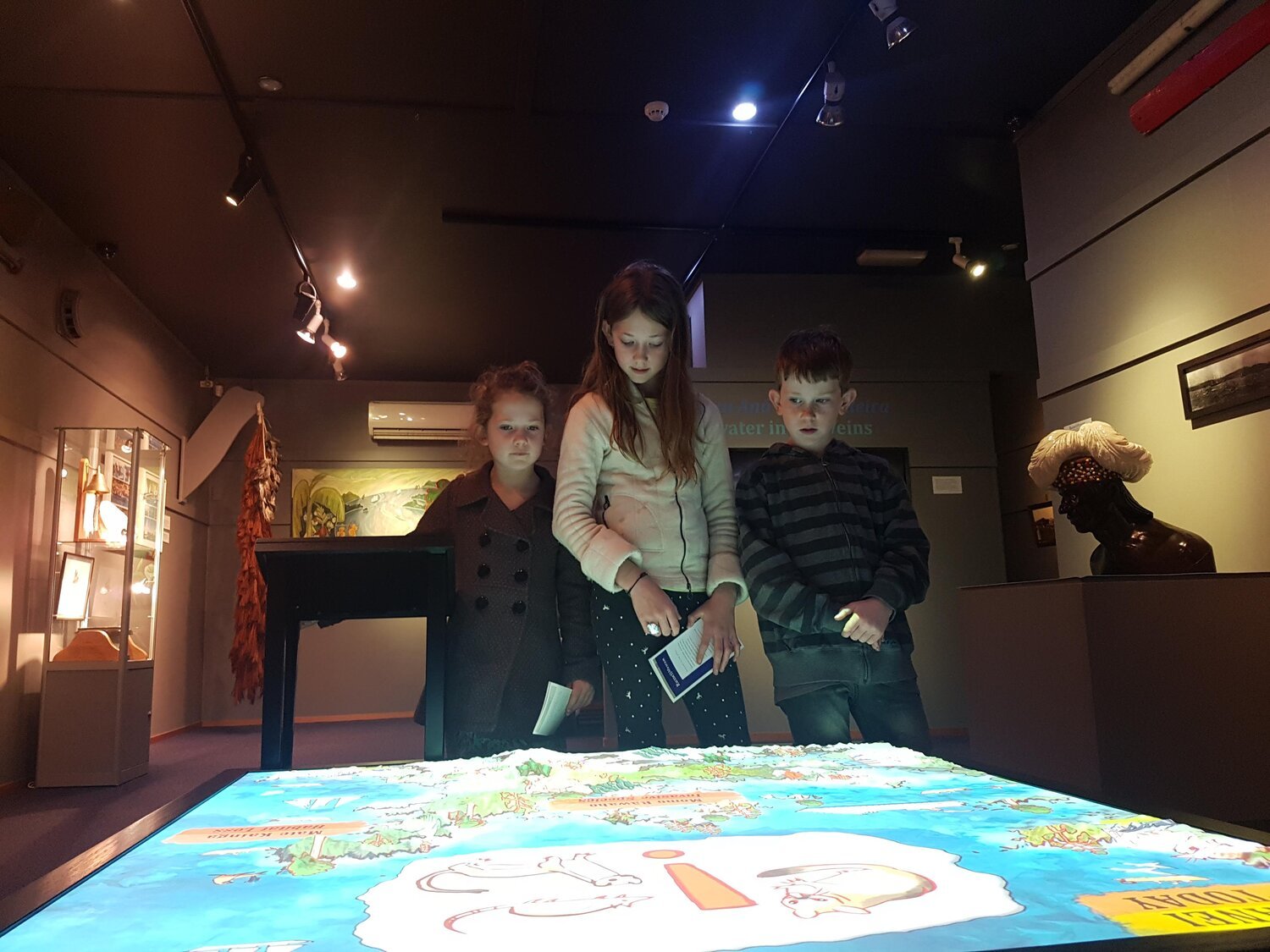What is an interactive, anyway?
The word “interactive” conjures up images of buttons and lights and fancy new forms of technology. In our world it’s been a kind of shorthand for “something vaguely tech-y and appealing for visitors” for at least 20 years.
But like many things in the modern world, interactivity is not really new. The creation of stories has always been about the interaction between the storyteller, the audience, and the story itself. Interactivity can be seen as taking us back, beyond what we think of as “traditional” forms, to more ancient ways of telling stories.
You can’t change a novel, once it’s printed, or a film (director’s cuts aside), or, for that matter, an old-style museum exhibit. This apparent permanence is sometimes associated with a kind of mystique of creative perfection. This or that masterpiece is exactly, to the word, to the frame, as its creator, the artist, the auteur, decided it should be. The meaning is fixed, you just have to be clever enough to find it.
By contrast, interactive stories are designed to be changed: the storyteller or the audience, or both together, can alter the outcome, the plot, the hero, the moral and the meaning. You can change the outcome of a bedtime story (if the ending doesn’t seem to hit the spot, try something else tomorrow night), the progress of a video game (“you killed me! Hang on while I respawn”), or fan fiction (Sherlock and Dr Watson get married).
It’s no coincidence that these are not high culture genres. Interactivity always involves some degree of power sharing between storyteller and audience, some loss of total artistic control.
When we create visitor experiences we tend to structure them around the two things visitors seem to love the most: real objects with stories to tell, and interactives which make visitors themselves part of the story.
Classic “museum interactives” are essentially “story games”: the storyteller sets the parameters of the game, what it is about, what the possible outcomes are, and what the limits are of the audience’s freedoms. It’s like creating a tiny model world into which you release your visitors, armed with the one thing you can’t create: free will. Inevitably they use that freedom to “game the game” ‒ to play in ways that you didn’t predict.
Many years ago we worked with HIT Lab to make what was then a pretty innovative thing, a multi-user, multi-screen, multi-touch touchscreen interactive for the New Zealand Pavilion at a World Expo in Japan. We had little “bubbles of content” floating over beautiful landscape backgrounds, and the idea was that visitors would touch them to find out more about New Zealand. But quite a few visitors seemed to be more interested in playing a version of ping pong with our carefully crafted content, flicking the little bubbles back and forth around the room. I decided that was actually not a bad thing. If you’ve created an experience which people have fun with, that in itself is not to be sneezed at ‒ even if they are not learning exactly what you want them to learn.
It makes sense to think of a kind of gradient between interactive and non-interactive experiences, rather than a clear division. Even experiences which seem on the face of it “non-interactive” can have interactive qualities. In my last post (which to my shame was only a few days short of a year ago) I argued that spatial experiences are in a sense more interactive than time based ones, because they offer visitors more choice, more ability to construct their own meaning from what they experience. But time-based storytelling can also, sometimes, give visitors this freedom in a different way.
The psychologist Bruno Bettelheim wrote a book called “The Uses of Enchantment” about why children love fairy tales: in it he contrasts modern stories with their realism or direct moralizing with fairy tale openness, which gives readers (or more likely, listeners) space to create their own meanings. “What is this kingdom which many fairy-tale heroes gain at the story’s end? Its main characteristic is that we are never told anything about it.... The fairy tale uses universal symbols that permit the child to choose, select, neglect and interpret the tale” according to their abilities and needs, and stage of development.
That’s also what visitors love about interactives: they get, even in some small way, to co-create, to be active agents rather than passive participants, to conform, play with, bend or perhaps ignore the rules you have painstakingly set.



